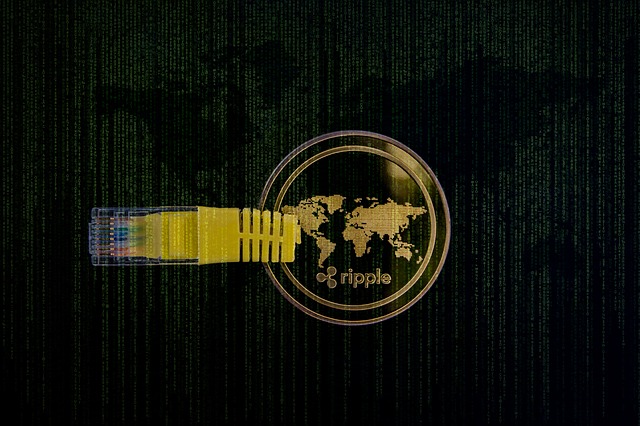Hamish Sherlock, Sr. Director of Solutions Consulting at Applause
The popularity of cryptocurrency and peer-to-peer (P2P) payments has seen a fast and furious rise. The number of cryptocurrencies worldwide increased from 2,388 in December 2019, to more than 10,000 in February 2022 – a growth of 350 percent. It’s little surprise, then, that crypto wallets that enable users to manage their cryptocurrencies are suddenly in demand.
As a result, banks and fintech brands are facing pressure to provide crypto wallet services that offer the same levels of usability, flexibility, and security that customers expect from traditional banking apps.
However, while the concept of the crypto wallet is simple enough – it’s essentially an account for sending and receiving payments – the technology behind it is somewhat more complex and poses a challenge for anyone looking to build one. Crypto wallets must effectively and efficiently manage digital keys and cryptocurrency transactions in the blockchain, while providing users with a simple, friction-free experience.

Learning from experience
When it comes to designing crypto wallets, there are lessons that can be learned from past experiences. During the pandemic, for example, many financial institutions were forced to turn to digital solutions to maintain business continuity. This shift led to the emergence of bugs and glitches that were highlighted in a recent industry report.
The most common bugs in digital financial experiences were revealed to be workflow and functional errors, which account for 71.4% of functional defects. These prevent users from completing desired tasks, for example, “Unable to transfer funds.” Functional errors were the most common payment bugs, a staggering 84%, meaning transactions and payments didn’t process correctly. This was often tied to problems with a particular payment instrument, merchant or capture device, such as a problem with certain BINs or SWIFT codes.
These types of issues can be a deciding factor for users looking for a smooth and simple service. It’s vital, therefore, that financial services providers identify and fix any functional problems that might exist in their crypto wallet before it goes to market. Otherwise, they risk customers looking elsewhere.
Satisfactory experience
In recent years, increasingly sophisticated customer expectations, and the rising popularity of fintechs and challenger banks has seen a growing focus on the user experience (UX) in financial apps. If crypto wallets are to be adopted to the same extent, consideration must be given to a number of different elements in order to deliver the best possible UX.
It’s important to remember, for instance, that although it’s a high-tech app, a crypto wallet needs to be designed for non-technical users. Details such as the app’s design, navigation, and user guide must be as much of a priority as the underlying technology. Apps should also be designed with inclusivity in mind and be accessible to everyone. Because it’s not something that can be added or designed for after the fact, inclusive design starts with the software development cycle and should be planned for accordingly.
Compatibility with multiple operating systems matters as well, if the app is to appeal to the largest possible number of users. Limiting it to just Apple iOS or Android will significantly reduce the number of people that can access it.
The volatility of the cryptocurrency market is also an important consideration. The rate at which coin prices can fluctuate means crypto wallet users like to monitor exchange rates much more intently than traditional banking customers. But most don’t have the time or energy to track prices around the clock. To prevent users from losing track of their coins – and to keep them engaged – crypto wallets should send updates via push notifications, letting them know when a certain price target is reached, when coin prices have noticeably changed, or when they’ve received a payment.
Safe and secure
Security is a crucial part of a crypto wallet. Without the ability to store cryptocurrencies securely, users simply won’t be interested.
Two-factor authentication will protect a user’s funds against potential hacks, while automatically logging the user out of the wallet after a period of inactivity or when they close the app will minimise the risk of others being able to access their content.
Local storage of the private key is another essential security feature. Rather than storing private keys on a server, from where they can be easily stolen, crypto wallets should automatically store them locally on the end user’s devices.
Users should be able to easily back up their wallets to protect against device or software malfunctions.
Most people will benefit from creating a backup on an SD card or on their laptop’s hard drive, although not everyone will think of this. Integrating secure cloud storage apps like Dropbox or Google Drive into the wallet will greatly improve security for most users.
Incorporating emerging technologies
Incorporating all the elements outlined above may still not be enough for some. Many customers now expect technologies such as AI, AR/VR, and voice to be integrated into key portions of the user journey.
In addition to the use of chatbots and virtual assistants to streamline the customer service process, account holders expect intelligent, personalised recommendations for products and services that complement how they already interact with a financial services provider. They want intuitive, interconnected experiences that span every channel they use to manage their cryptocurrencies. Here’s a situation where customers would benefit from a super app, making it simpler for crypto wallet users to complete everyday tasks, utilise services and make payments, all from the same app.
With the rise in cryptocurrencies showing no signs of slowing, the use of crypto wallets will only increase. But, as many financial services providers found true when developing digital banking platforms, it’s vital to ensure any crypto wallet is secure, bug-free and, perhaps most importantly, easy to use. If not, their competitors will benefit as people take their cryptocurrencies elsewhere.


